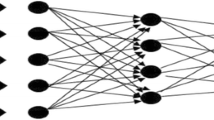Abstract
An architecture is presented for real-time continuous speech recognition based on a modified hidden Markov model. The algorithm is adapted to the needs of continuous speech recognition by efficient encoding of the state space, and logarithmic encoding of the weights so that products can be computed as sums. The paper presents the algorithm and its application related modifications, the mapping of the algorithm to a special purpose architecture, and the detailed design of this architecture using configurable logic. Emphasis is given on how the attributes of the algorithm are exploited in a configurable logic based design. A concrete design example is presented with a coprocessor engine having one large FPGA, 64 Mbytes of synchronous DRAM (SDRAM), a small FPGA as a SDRAM controller, and 2 Mbytes SRAM. This engine operating at 66 MHz performs roughly nine times as fast as a high end personal computer running a fully optimized version of the same algorithm.
Similar content being viewed by others
References
Speech Technology is the Next Big Thing in Computing. Business Week, February 23, 1998.
H. Murveit, “An Integrated Circuit Based Speech Recognition System,” Ph.D. Thesis, Department of Electrical Engineering, University of California at Berkeley, 1983.
S. Narayanaswamy, “Pen and Speech Recognition in the User Interface for Mobile Multimedia Terminals,” Ph.D. Thesis, Department of Electrical Engineering and Computer Sciences, University of California, Berkeley, 1996.
S. Hauck, “The Roles of FPGA's in Reprogrammable Systems,” Proceedings of the IEEE, April 1998, pp. 615–637.
H. Schmit and D. Thomas, “Hidden Markov and Fuzzy Controllers in FPGAs,” Proceedings of the IEEE Symposium on FPGAs for Custom Computing Machines, Computer Society Press, 1995, pp. 214–221.
D. Yeh, G. Feygin, and P. Chow, “RACER: A Reconfigurable Constraint-Length 14Viterbi Decoder,” Proceedings of the IEEE Symposium on FPGAs for Custom Computing Machines, Computer Society Press, 1996, pp. 60–69.
S.J. Young, “A Review of Large-Vocabulary Continuous-Speech Recognition,” IEEE Signal Processing Magazine, September 1996, pp. 45–57.
S.B. Davis and P. Mermelstein, “Comparison of Parametric Representations for Monosyllabic Word Recognition in Continuously Spoken Sentences,” IEEE Trans. Acoustics Speech and Signal Processing, vol. ASSP-28, no.4, 1980, pp. 357–366.
V. Digalakis, P. Monaco, and H. Murveit, “Genones: Generalized Mixture Tying in Continuous Hidden Markov Model-Based Speech Recognizers,” IEEE Trans. Speech Audio Processing, 1996, pp. 281–289.
F. Jelinek, Statistical Methods for Speech Recognition, MIT Press, 1997.
V. Digalakis, L. Neumeyer, and M. Perakakis, “Quantization of Cepstral Parameters for Speech Recognition Over the WWW,” IEEE Journal on Selected Areas in Communications, 1999, pp. 82–90.
S. Tsakalidis, V. Digalakis, and L. Neumeyer, “Efficient Speech Recognition Using Subvector Quantization and Discrete-Mixture HMMs,” IEEE International Conference on Acoustics, Speech and Signal Processing, submitted.
P. Price, “Evaluation of Spoken Language Systems: The ATIS Domain,” Proceedings of the Third DARPA Speech and Natural Language Workshop, Morgan Kaufmann, June 1990.
L. Moll and M. Shand, “Systems Performance Measurement on PCI Pamette,” Proceedings of the IEEE Symposium on FPGAs for Custom Computing Machines, Computer Society Press, 1997, pp. 125–133.
Intel Corporation, PC SDRAM Specification ver. 1.51, 1997.
Digital Equipment Corporation, PCI Pamette user-area Interface for Firmware v1.9, 1997.
J.F. Wakerly, Digital Design Principles and Practices, Prentice Hall, 1990.
R.H. Katz, Contemporary Logic Design, The Benjamin/Cummings Publishing Com., 1994.
Altera Corporation, ALTERA MAXCPLUS II VHDL, Altera Corporation 101 Innovation Drive, San Jose, CA, USA, 1996.
Altera Corporation, ALTERA Data Book 1998, Altera Corporation 101 Innovation Drive, San Jose, CA, USA, 1998.
J.M. Berge, A. Fonkoua, S. Maginot, and J. Rouillard, VHDL Designer's Reference, Kluwer Academic Publishers, 1992.
Altera Corporation, FLEX 10KE Embedded Programmable Logic Family, Altera Corporation 101 Innovation Drive, San Jose, CA, USA, 1998.
IBM Corporation, 168 Pin SDRAM Registered DIMM Functional Description & Timing Diagrams, 1998.
IBM Corporation, 8M x 64/72 Bank Unbuffered SDRAM Module, 1998.
SAMSUNG Electronics, KM68257C 32Kx8 Bit High Speed Static RAM(5V Operating), February 1998.
Author information
Authors and Affiliations
Rights and permissions
About this article
Cite this article
Stogiannos, P., Dollas, A. & Digalakis, V. A Configurable Logic Based Architecture for Real-Time Continuous Speech Recognition Using Hidden Markov Models. The Journal of VLSI Signal Processing-Systems for Signal, Image, and Video Technology 24, 223–240 (2000). https://doi.org/10.1023/A:1008197523254
Published:
Issue Date:
DOI: https://doi.org/10.1023/A:1008197523254




